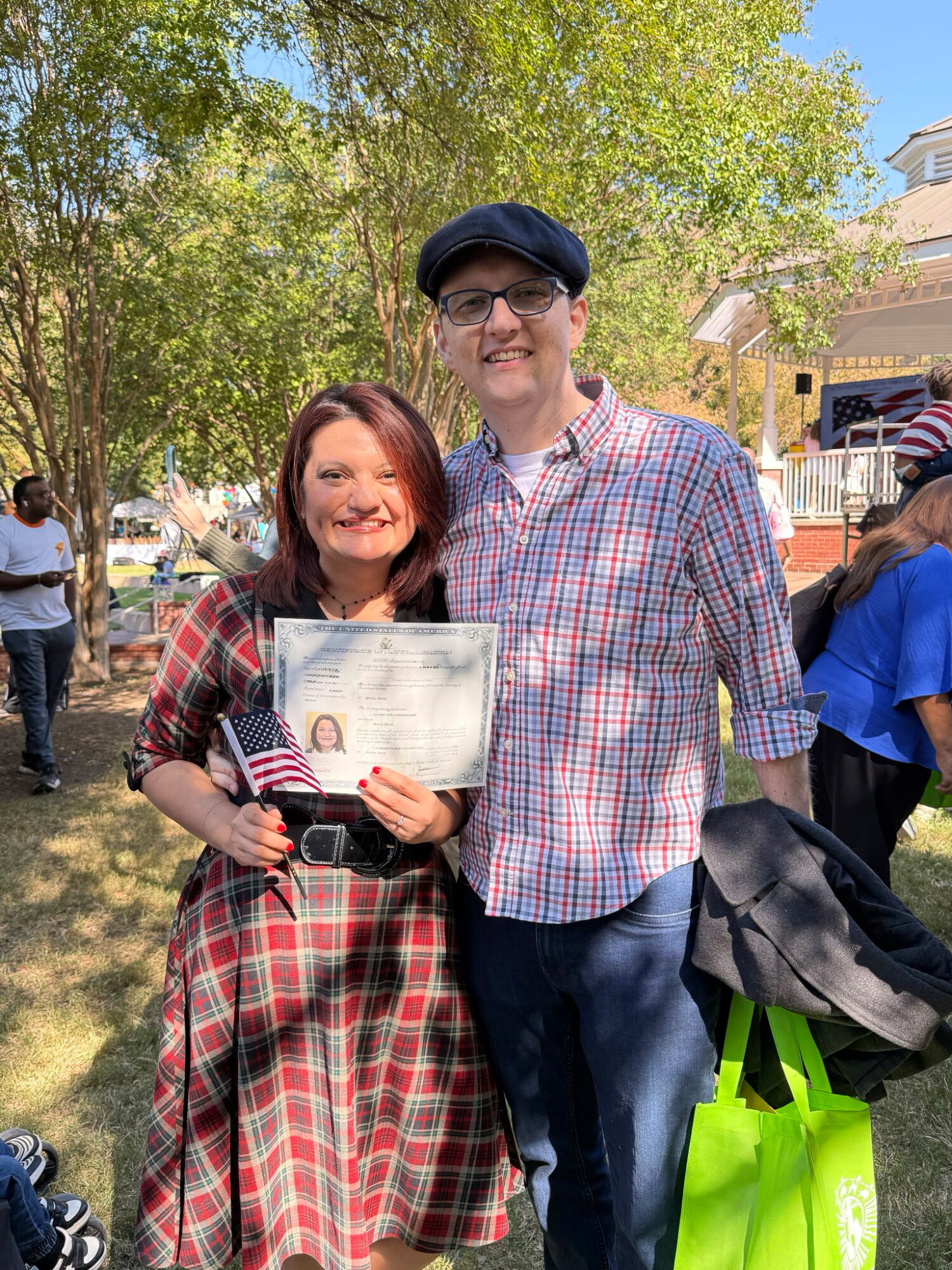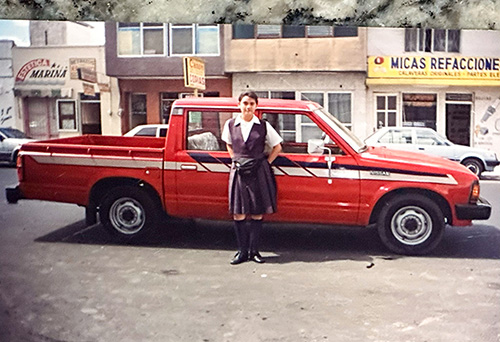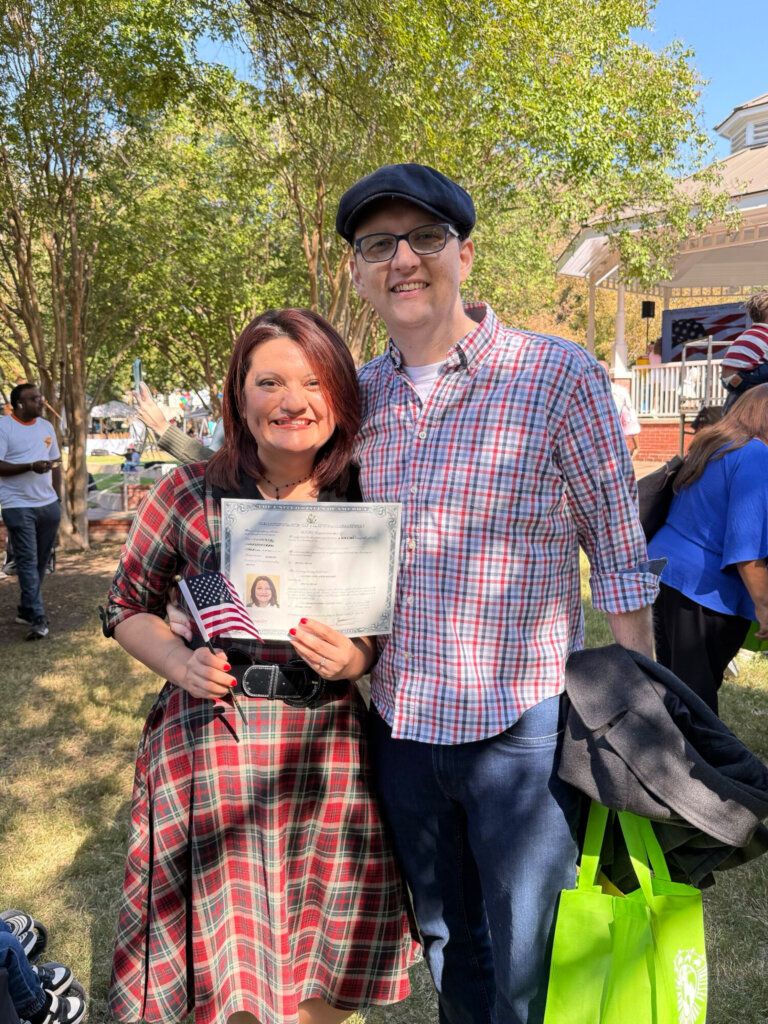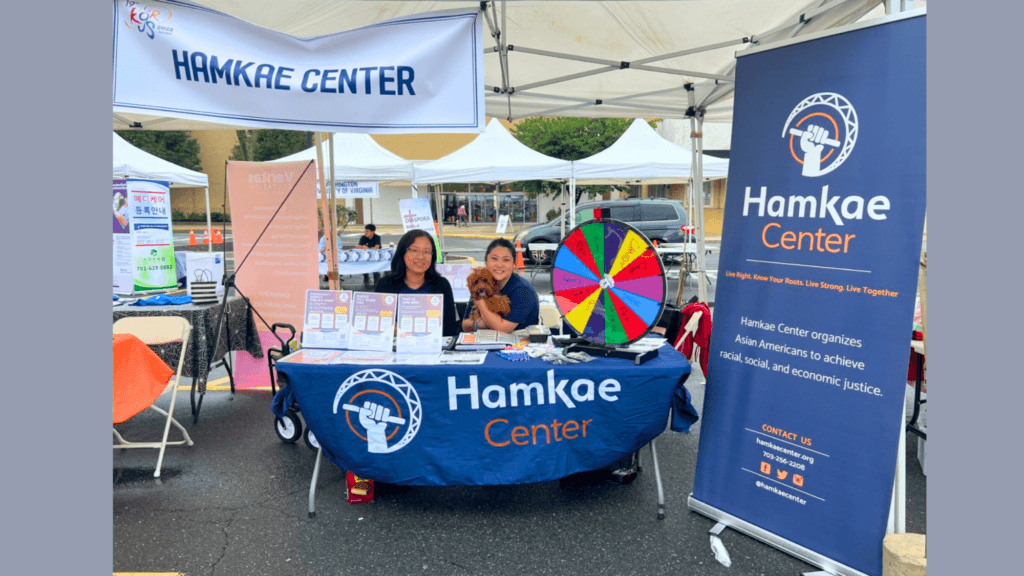Lucero Cervantes Kilgore: “It was so easy! I wanted to punch myself…I would like to go back to help others realize that the process is not so scary.”

Explore More
My name is Lucero Cervantes Kilgore. Lucero, means light.
I was born in Torreon, Coahuila, Mexico. My mother worked in quality control for an international company and she had a really good opportunity for work in the U.S. and she took it. She noticed that I liked learning languages. In Mexico, in the school that I was attending, I was already taking English classes. So she took the opportunity to pursue something big for me too. We moved to a tiny little town named Greenville, Texas. It’s about an hour from Dallas. It was just my mom and me. My mother and I had what Mexico used to call an indefinite visa. I was thirteen when I moved here. We were supposed to stay only for a few years, and that turned out to be a lifetime.

In Mexico, I had learned a bit about American culture and a few words of English. But once I was here, it was a cultural shock, especially because I was a teenager. There were only 5 or 6 Hispanic people among 500 students in my high school. There were no stores related to Hispanic culture, nothing. I was very quiet. I was very sheltered. I did not want to go anywhere. I’ll be honest, I was very angry. I did not understand the opportunity that was given to us.
My English was not good. I took the TAKS [Texas Assessment of Knowledge and Skills] test three or four times before I was able to graduate from high school. I had two teachers who helped me; they worked with me constantly to perfect my English to pass this test. And I did! That’s where my love for helping people started, because somebody helped me. I attended two years at community college and I paid for all of it doing little jobs here and there. Eventually, I transferred to Texas A and M University-Commerce [now called East Texas A & M]. My mother also did odd jobs in addition to her job to help me finish college. We both worked very, very hard for my college degree.
In the early 2000s someone heard about DACA on Univision and told my mother. Proyecto Inmigrante helped me get DACA. When I graduated from university, I had a degree in photography and arts and a minor in psychology. I was in my early twenties and I didn’t know what to do. A friend of my mother’s, who is Mexican like me, but already a citizen said, “You’re Mexican in this country, and the only thing you can do is to either work at Taco Bell, wash dishes or clean houses.” There is nothing wrong with doing those jobs, but I remember it really hurt. I knew I had dreams and I could do so much more. But it was one reason I felt held back.
I got a job at the newspaper in my town, but the newspaper was struggling and they told me I needed to take time off. I started doing photography. Through my church, I met the community director of The Hope Center. People there can get their GED, learn English as a second language and take computer classes. He asked if I would be interested in becoming an ESL teacher. It was a paid job so I said yes and I taught English as a second language for five years to people from India, China, Mexico, all different places. Teaching the class taught me how to love my Mexican culture and how to love the American culture and how to blend both. I taught the citizenship test classes and many adults were able to get their citizenship because of my encouragement. But eventually my photography business also started blooming. I had to make a choice between teaching ESL and photography—and photography is my passion.
In 2015, when I married my husband, an American citizen, Proyecto Inmigrante helped me apply for my residency and eventually my citizenship. I became a U.S. citizen in October 2024. I knew I should have gotten my citizenship sooner, but there was just so much happening. My mom has an illness and there was one thing after another. I just had this fear that I wasn’t going to pass the test. I was so nervous for this test—I probably had PTSD from high school when I had to take that test three or four times to graduate.
But so much has changed politically and my husband has always voted. I realized that it is important for me to vote. I don’t know what’s going to happen with immigrants. I began to feel I needed to get this done. Then [my husband] was diagnosed with cancer and he wanted to make sure that I was going to be okay. He said, “We’ve been waiting too long for this, you need to take this test.” I knew he was right.
I applied in February 2024 and it took about 8 or 9 months. I studied up to the very end. For two hours I was waiting for my interview and studying. The immigration agents coming in looked so intimidating. Eventually I had my interview. It was so easy! I wanted to punch myself. I am a photographer full time now, but if for some reason photography starts to slow down, I would like to go back to help others realize that the process is not so scary.

My oath ceremony was part of a festival in a park, celebrating cultures. My husband and our best friends were there. It felt incredible to be surrounded by so many different cultures coming together and to have this opportunity. It was a very long road with fears, with joy, and questions. I want to believe that each person who was there wants to do something for this country to change it for the better. We were giddy, like high school graduation. It was an indescribable feeling, but a lot of joy. I worked so hard to get where I was on that particular day.
I feel so proud to be Mexican American. I’m very proud of both my cultures. I’m proud of my mom and what she has done for me and for us. We can be our worst enemy, but we have the power to move mountains. I’m a business owner. I’m a woman in Texas. I’m Hispanic. I don’t know what the future holds for immigrants, but becoming a citizen gives me peace of mind.



